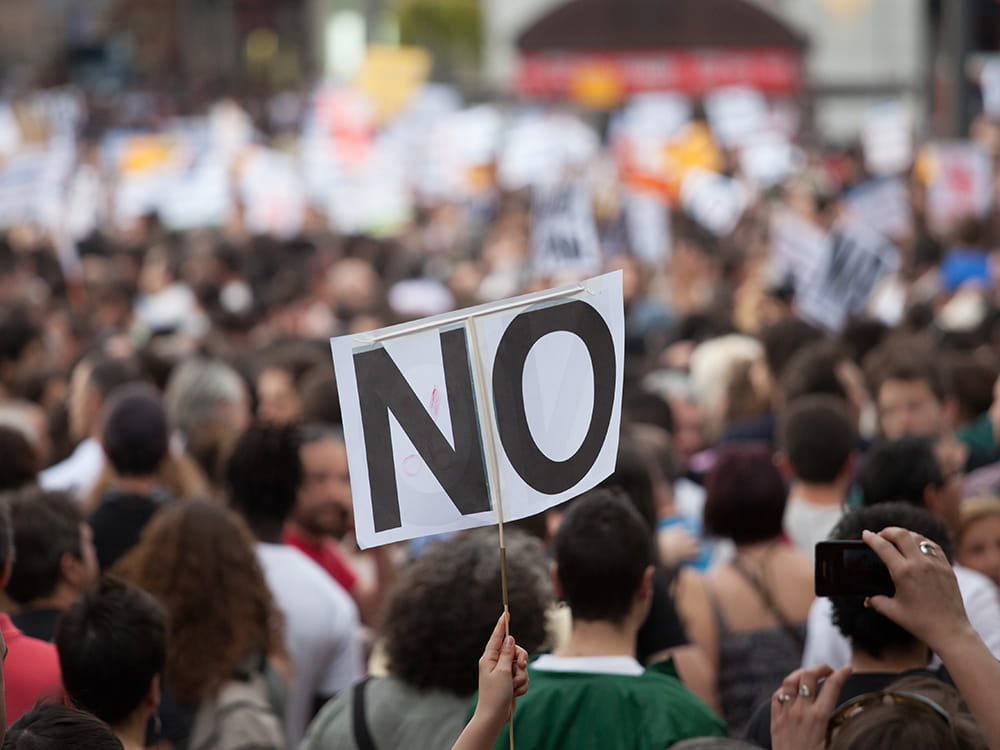One of the great rules of press coverage is that all groups feel they don't get enough attention. The religious and spiritual are no exception; they often complain that the big media don't write or say enough about religion and spirituality, and that when they do turn to such subjects they are scandal-focused.
There's plenty of anecdotal evidence to support this view--for example, of the three major networks, only ABC has a full-time religion correspondent. Now the Center for Media and Public Affairs, a nonpartisan organization that studies the press and whose directors, Linda and Robert Lichter, are the deans of media-content analysis, has released a report that gives the details. And they're not always what you might expect.
Covering the years 1969 to 1998, the Center for Media and Public Affairs study looked The New York Times, The Washington Post, and the three major newsmagazines, and at the evening newscasts on ABC, CBS, and NBC. Researchers examined a randomized sample of 2,365 stories on religious and spiritual topics and coded them for content. The study results, released last week, are considered the most exhaustive ever on how the press covers religion and spirituality.
The study had two surprise findings. The first was that coverage of religious issues doubled from the 1980s to the 1990s, with an equal rate of increase in both the print and broadcast media. So whatever your perception may be, coverage of religion has been on a major upswing.
The second surprise finding was a much higher rate of faith sentiment on they part of journalists themselves, who are perceived as irreligious. (In conjunction with the content analysis, the Lichters also surveyed big-media reporters and editors on their personal views.) In 1980, of national-media journalists, 20% called themselves Protestant, 14% called themselves Jewish, and 12% called themselves Catholic, 4% cited other faiths, and fully 50% answered "none." Since only about 15% of Americans generally answer "none" in polls, the 1980s figures did show the journalism profession much less religious than the population as a whole.
Today, in contrast, 36% of national journalists call themselves Protestant, 19% Catholic, 19% Jewish, 4% all other faiths, and only 22% answer "none"--not that different from the population as a whole. (And, yes, these figures back the perception that the national media is disproportionately Jewish, 19% self-identified as Jewish in the media versus 2% in the population as a whole. So, let's not mention the existence of this survey to Pat Buchanan.)
The types of religions covered in the study are a barometer of the changing landscape of American faith. In the 1970s, 71% of coverage concerned Protestants and Catholics, while just 11% concerned the "other" category of Eastern faiths, New Age, and unaffiliated movements. By the 1990s, the mainline faiths were down to 60% of coverage, while the "other" category had risen to 24%.
Researchers found that of all faiths, the most "distinctive media profile" belonged to the Roman Catholic Church. The study doesn't speculate on why, but the likely reason would be that of the major denominations, Catholicism is most formal--official positions, lengthy policy statements--and also the faith that is most like a big government agency in the sense of having divisions, offices, and chains of command. Journalists know how to navigate that kind of territory, so they feel at home covering Vatican issues. Other faiths tend to be more decentralized, many Protestant denominations being administered church by church, and Jewish viewpoints being so sufficiently in dispute that rabbis have been arguing over interpretations for thousands of years.
If the study shows an increase in coverage, is the increase necessarily heartening? When it came to story categories, the study found that most of the upswing was in reporting of controversy and scandal--"crime and wrongdoing" articles, for example, went from 4.6% of print stories on religion in the 1970s to 12.9% in the 1990s. "Religion and politics" stories enjoyed a similar jump. The press has to cover Jimmy Swaggart types and clerical pedophilia, of course, but the big swing in the "crime and wrongdoing" category means that although religion is now in the news more, this often happens in a negative context.
On issues of controversy, the study found that most sources quoted by the major media are not liberal, as might be expected, but primarily traditionalist. Researchers found that 76% of those quoted in religion stories opposed abortion choice, 65% opposed sex outside marriage, and 62% opposed ordaining homosexuals into the clergy, though 63% favored birth control.
On the status of women and minorities, on the other hand, sources cited in religious and spiritual stories were almost uniformly progressive. One hundred percent of those quoted favored a greater role for minorities in society and thought churches were obligated to work toward that end; 83% favored a greater role for women in church structures, though only 53% supported the ordination of women.
The final point of the Center for Media and Public Affairs study is what it didn't find. What it didn't find was discussion of what faiths actually believe. An amazingly low 7% of national media stories concerned beliefs and theology-that is, the substance of faith. Journalists seemed comfortable discussing the politics and scandals of religion but not what people believe--though what they believe, and why they decide to believe it, is in many ways the most important issue. Important for individuals, anyway--perhaps still too complicated for the big media.

